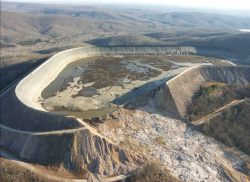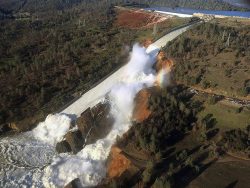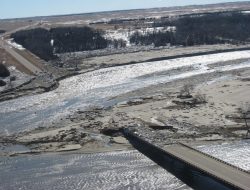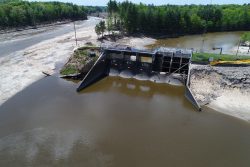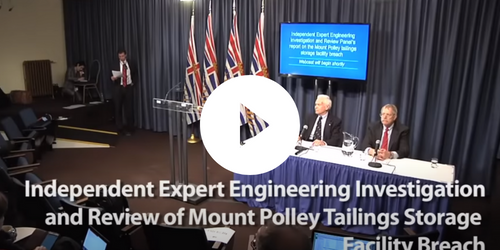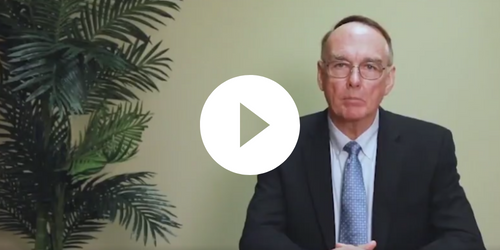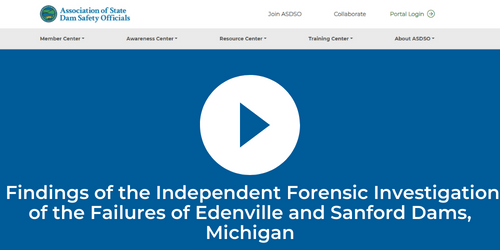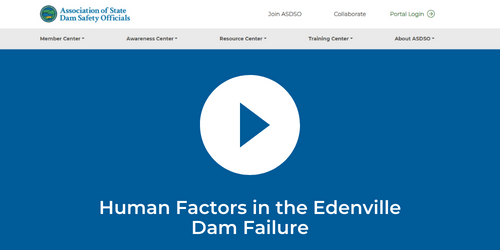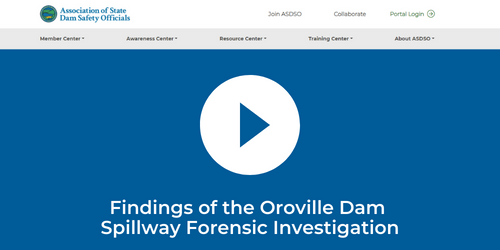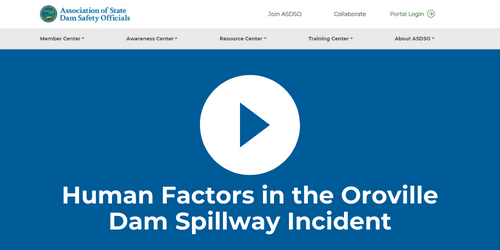Description & Background
Investigations of major dam failures and incidents have often been performed, but not in all cases. The Dam Incident and Failure Investigations page on this website provides access to dozens of forensic investigation reports covering more than 40 failures and incidents going back to the 1920s. These investigations and their findings and recommendations have sometimes supported the creation and adoption of major federal and state dam safety regulations.
Investigations should be independent and properly conducted, or they risk the loss of stakeholder and public confidence [1], findings that may be inaccurate, and recommendations that may not be appropriate. Few organizations currently have processes and policies in place to automatically conduct an investigation following a major dam failure or incident. The Association of State Dam Safety Officials (ASDSO) Dam Failures & Incidents Committee has developed the first guideline for conducting dam failure and incident investigations [2]. This guideline also includes recommendations for responding immediately after the event. In general, it is recommended that investigations be conducted if:
- A dam failure causes loss of life or serious injury.
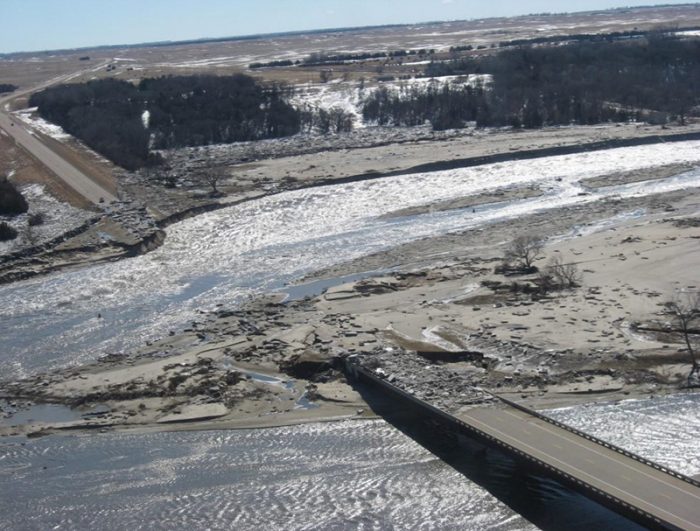
An adverse convergence of factors related to the physical setting of Spencer Dam led to an ice event that overwhelmed and failed the dam early in the morning of March 14, 2019. An independent investigation team released a failure report in April 2020. (Photo Source: Nebraska Public Power District)
- Many people were evacuated.
- There were significant economic, cultural, or environmental impacts beyond that of the dam owner.
- There are likely technical lessons to be learned (e.g., understanding an unusual failure mode). Even if the event was an incident or "near miss" and not a complete failure of a dam, an investigation might be beneficial to identify lessons to be learned by the dam safety industry to prevent future failures.
- There was a federally-declared disaster or emergency associated with the dam failure.
- There is a substantial public interest, and there was substantial media coverage of the event.
To better ensure the success of a forensic investigation, the following practices are recommended:
- The investigation team members should be identified and recommended by an independent organization/group.
- The investigation team members should be recognized experts in their fields and should have forensic investigation experience.
- The investigation should be adequately funded.
- The scope of the investigation should be well defined for the team.
- The investigation should have a relatively short schedule for completion (e.g., within one year), and the forensic team members should commit to meeting the schedule as a requirement for being on the team.
- The investigation team members and their employers should be independent of the stakeholders associated with the dam. They should sign statements indicating no conflicts of interest, such as prior involvement with the dam or a business relationship with any of the dam owners.
- The investigation should begin quickly after a failure, preferably within several weeks and ideally within a few days.
- The forensic team should visit the site.
- The forensic team should interview individuals who witnessed the event, as well as others who may be able to provide useful information; the interviews should preferably be conducted separately with individual interviewees rather than with groups of interviewees.
- The investigation should include human factors in its scope [3] – how did judgments, decisions, actions, and inactions at individual, group, organizational, and industry levels contribute to the failure? These human factors may extend to previous dam owners, the dam operator, or the regulator.
- The investigation report should be made public, and efforts should be made to disseminate its lessons learned throughout the dam safety industry.
References
This lesson learned summary was peer-reviewed by Nathaniel Gee, P.E., Tennessee Valley Authority and Irfan Alvi, P.E., Alvi Associates, Inc.
Summary
Photos
- St. Francis Dam failed at midnight on March 12-13, 1928. When investigating the cause of failure, it was clear that the proposed St. Francis Dam design was not reviewed by any independent party.
- The Lower San Fernando Dam failed in 1916. The focus of the post-failure investigation was liquefaction triggered by ground shaking. (Photo Source: Robert E. Wallace, USGS)
- The Teton Dam, In southeastern Idaho, failed on June 5, 1976. Investigations of the failure attributed the catastrophe to a series of design and construction related deficiencies.
- On December 14, 2005, the Upper Reservoir of the Taum Sauk Pump Storage Plant failed by overtopping during the final minutes of one of its pumping cycles. A FERC investigation report was published in April of the next year. (Photo Source: FERC Independent Panel of Consultants Investigation Report 2006)
- The Federal Energy Regulatory Commission required an independent forensic investigation following the 2017 spillway failure at Oroville Dam. (Photo Source: California Department of Water Resources)
- An adverse convergence of factors related to the physical setting of Spencer Dam led to an ice event that overwhelmed and failed the dam early in the morning of March 14, 2019. An independent investigation team released a failure report in April 2020. (Photo Source: Nebraska Public Power District)
- On May 19, 2020, the Edenville and Sanford Dams, located in central Michigan, failed. In August 2020, the FERC engaged a five-member independent forensic team to investigate the failures and the physical and human factors that contributed to them.(Photo Source: EGLE Water Resources Division)
Videos
- Video Presentation for Mount Polley Tailings Dam Forensic Investigation Findings
- Video Presentation for Feijão Dam I (Brumhadinho) Tailings Dam Forensic Investigation Findings
- Findings of the Independent Forensic Investigation of the Failures of Edenville and Sanford Dams, Michigan– ASDSO Webinar
- Human Factors in the Edenville Dam Failure – ASDSO Webinar
- Findings of the Oroville Dam Spillway Forensic Investigation – ASDSO Webinar
- Human Factors in the Oroville Dam Spillway Incident – ASDSO Webinar
Case Studies
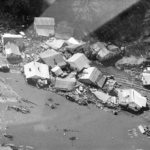
Buffalo Creek Dam (West Virginia, 1972)
On February 26, 1972 at approximately 8:00 A.M., Coal Slurry Impoundment #3 at the Buffalo Creek coal mine in Logan County, West Virginia gave way sending millions of gallons of water and millions of cubic yards of coal slurry down the Buffalo Creek. Over the next three hours...

Camará Dam (Brazil, 2004)
Camará Dam is a roller compacted concrete dam in Brazil completed in 2002 and failed during first filling in 2004. The dam was originally designed as an earthen embankment, but the design changed to RCC after the contractor was selected. Irregularities and potential conflicts of interest in the contracting process were allowed by the dam owner.
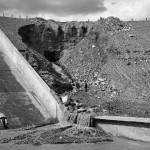
Fontenelle Dam (Wyoming, 1965)
Fontenelle Dam is located on the Green River near La Barge, Wyoming and was originally built in 1964 to provide irrigation water and hydropower for a region of southwest Wyoming. The earthfill embankment structure...
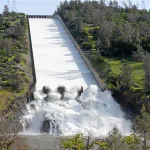
Oroville Dam (California, 2017)
With a height of 770 feet, Oroville Dam is the tallest dam in the United States. Completed in 1968 and located north of Sacramento in the foothills of the Sierra Nevada mountains, this large earthfill embankment dam is owned by the California Department of Water Resources (DWR) and is one of the key features...

Silver Lake Dam (Michigan, 2003)
The emergency fuse plug spillway at Silver Lake Dam in Michigan failed on May 14, 2003, resulting in a nearly complete release of the reservoir. The dam was modified in 2002 to increase spillway capacity with construction of the fuse plug spillway.
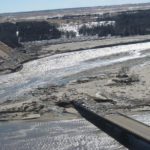
Spencer Dam (Nebraska, 2019)
Spencer Dam was a dam constructed for hydropower in 1927 on the Niobrara River in northern Nebraska. The dam consisted of a 3,200-foot-long embankment section and a 500-foot-long powerhouse/spillway section. The dam’s maximum height was 26 feet.
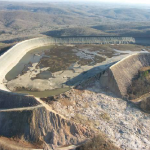
Taum Sauk Dam (Missouri, 2005)
Taum Sauk Pump Storage Plant was constructed by Union Electric in Reynolds County, Missouri between 1960 and 1962 to provide a means of hydroelectric power generation during peak demand periods. The plant consisted of an Upper Reservoir situated atop Proffit Mountain...
Best Practices
Other Resources
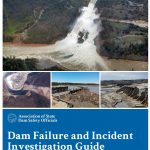
Dam Failure and Incident Investigation Guide (v2.0)
Author: ASDSO Dam Failures & Incidents Committee
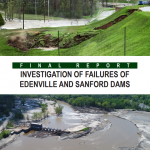
Investigation of Failures of Edenville and Sanford Dams - Final Report
Author: Independent Forensic Team
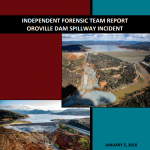
Independent Forensic Team Report for Oroville Dam Spillway Incident
Author: J. France, I. Alvi, P. Dickson, H. Falvey, S. Rigbey & J. Trojanowski

The Dam Incident and Failure Investigations page on this website provides access to dozens of forensic investigation reports covering more than 40 failures and incidents going back to the 1920s.





